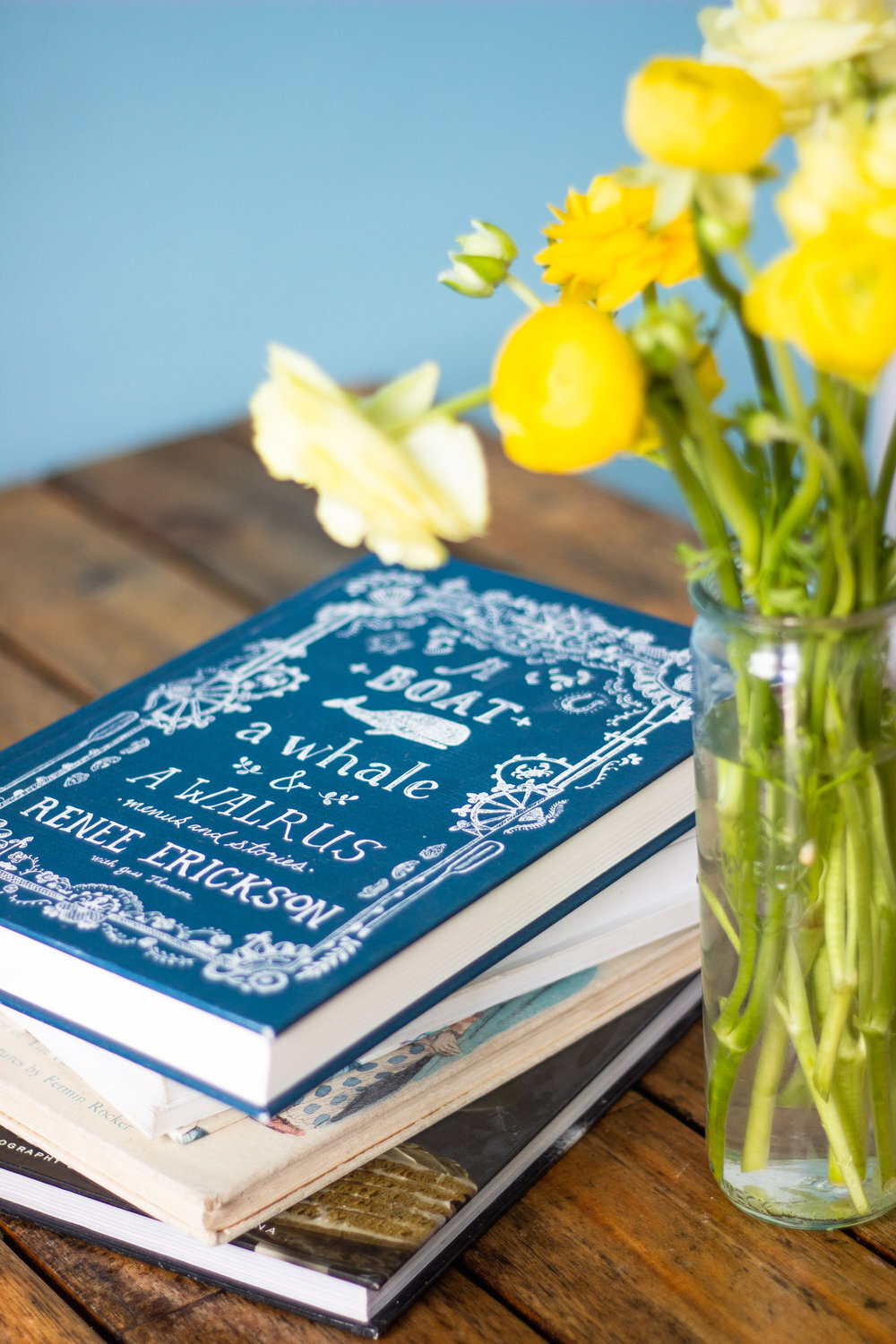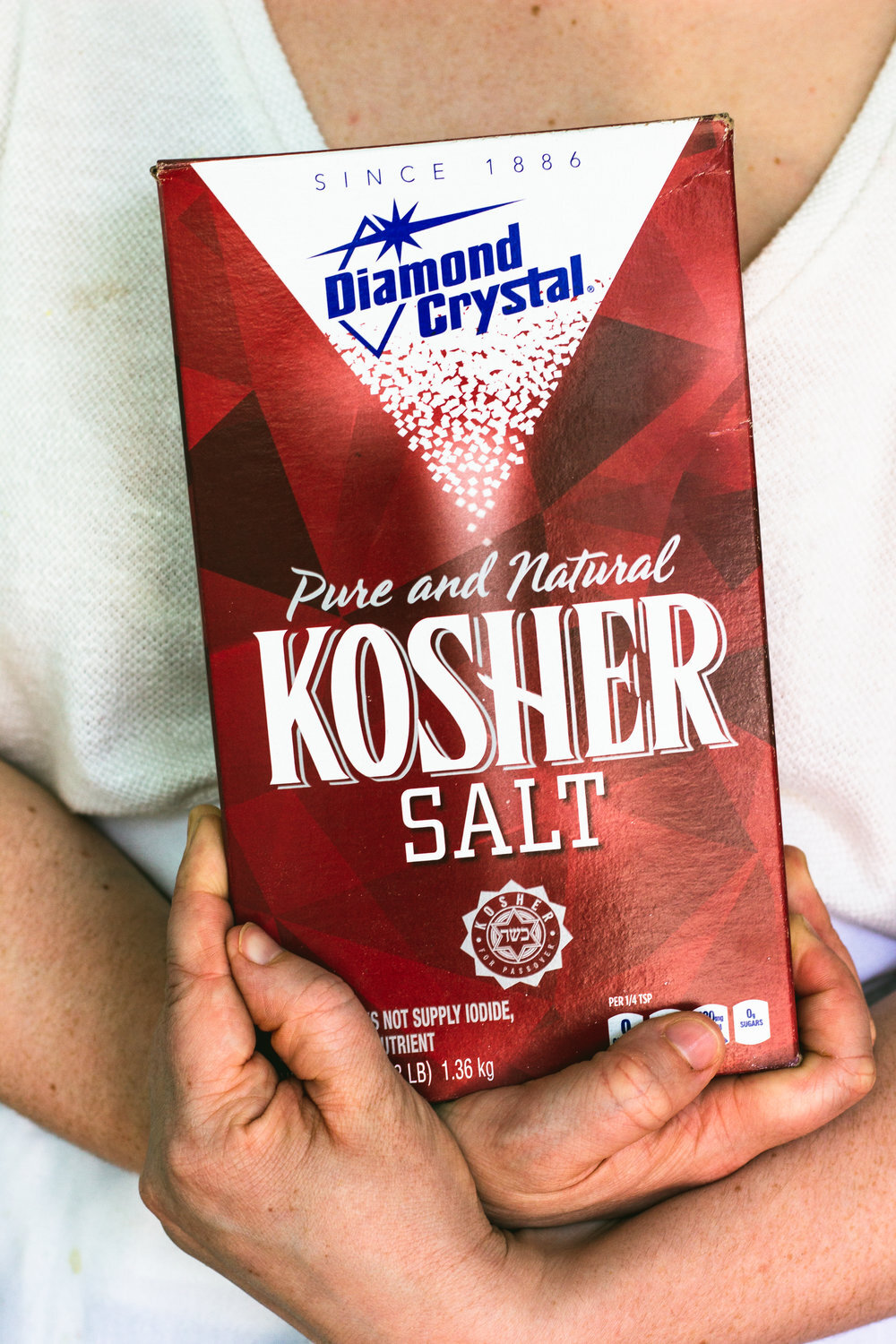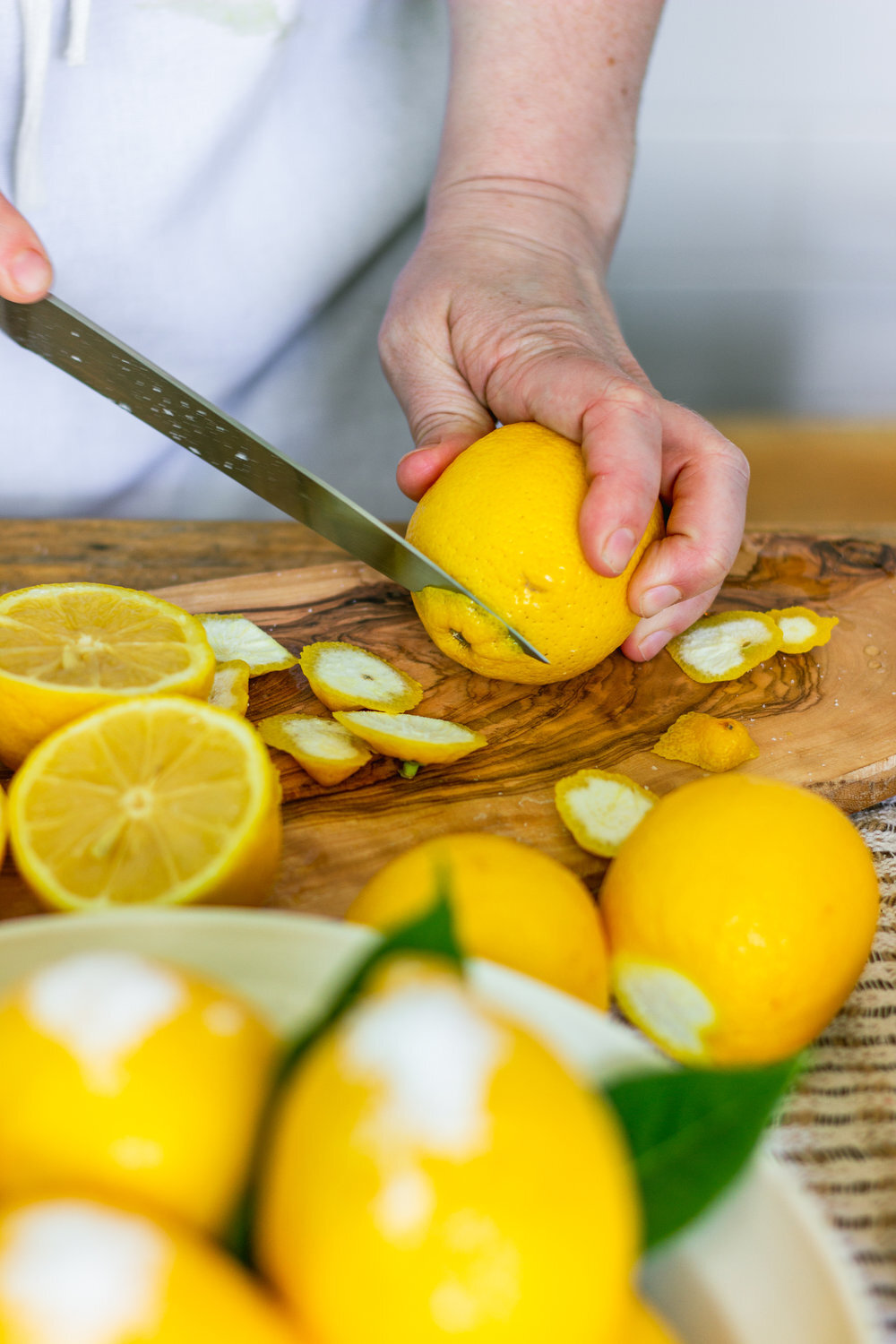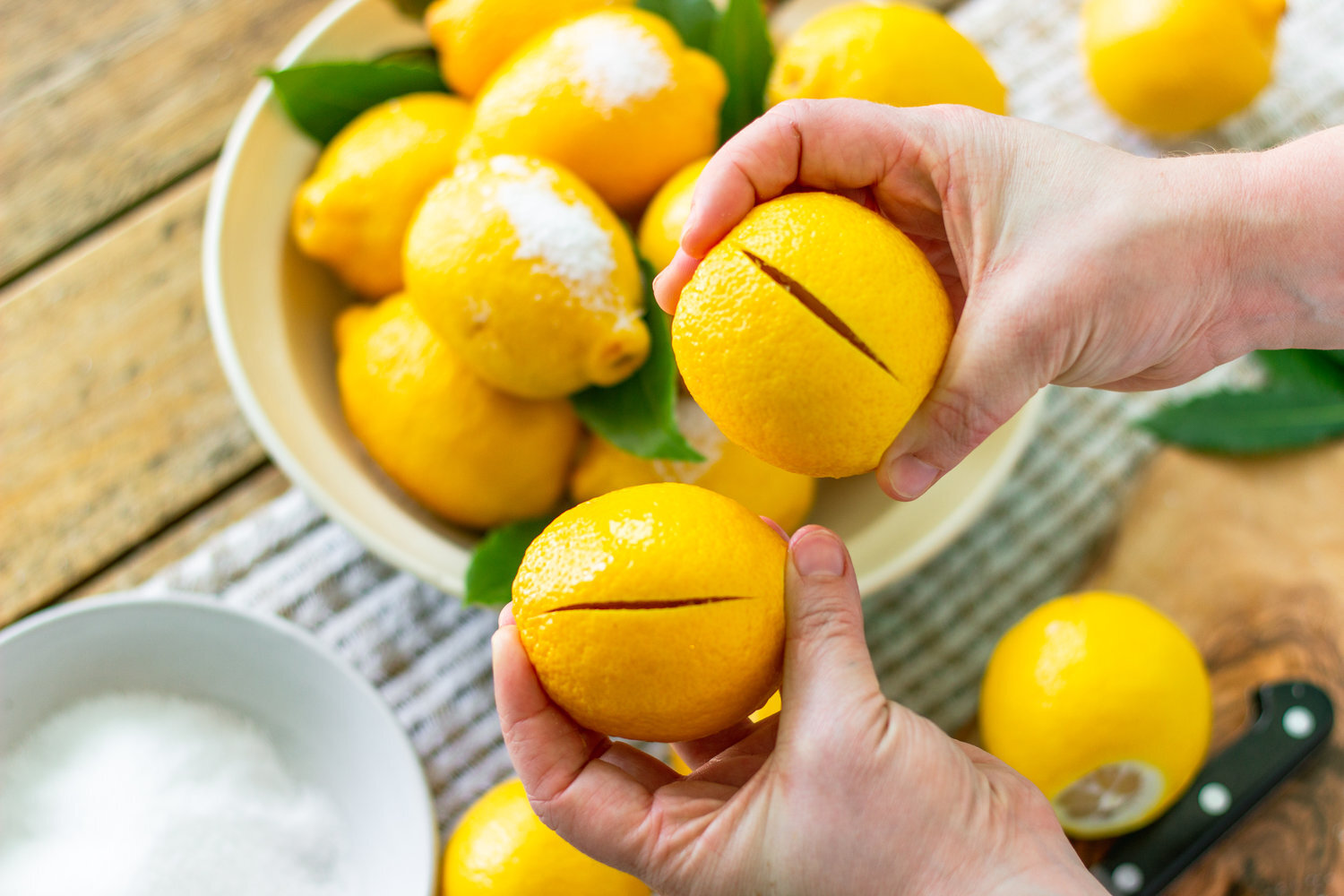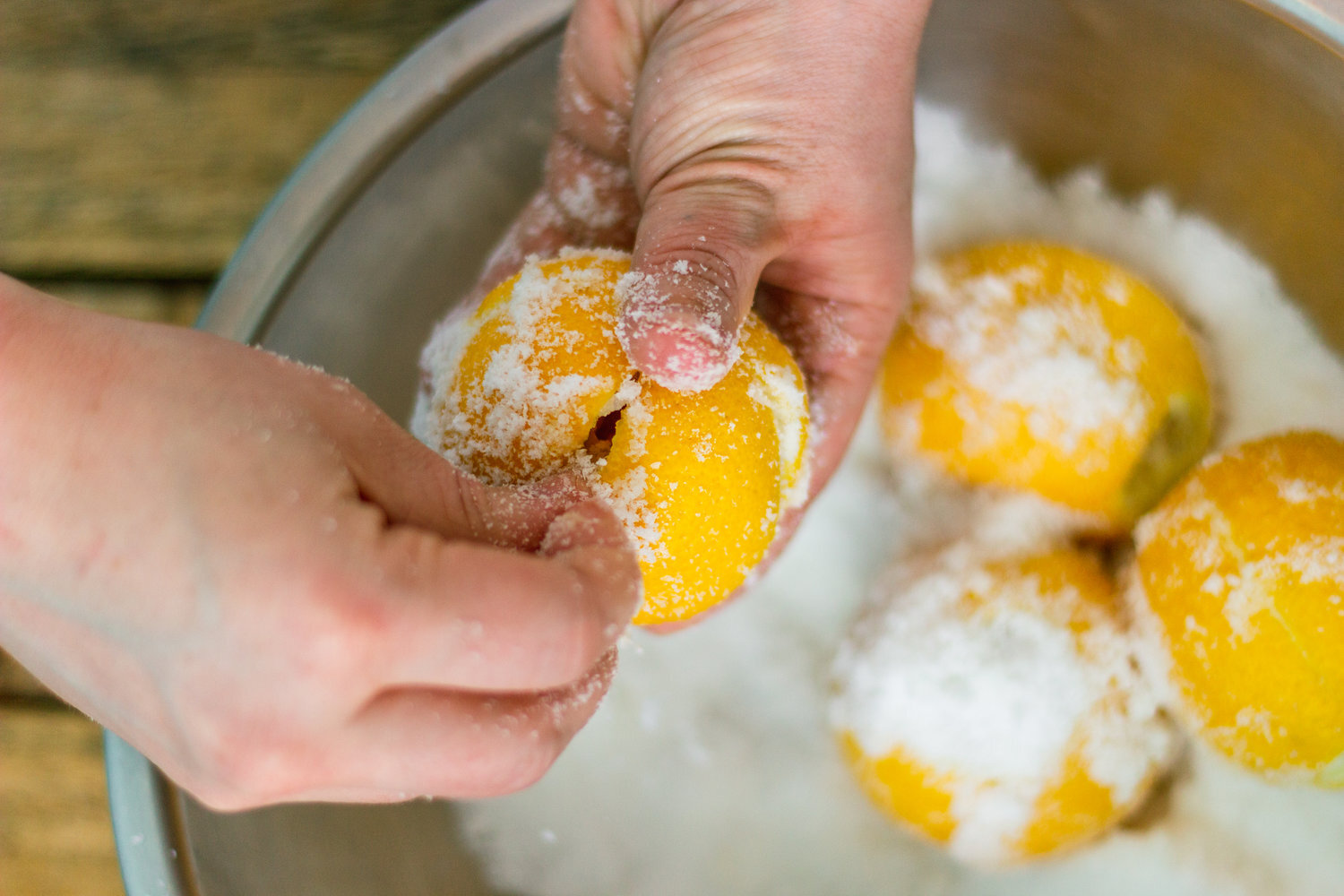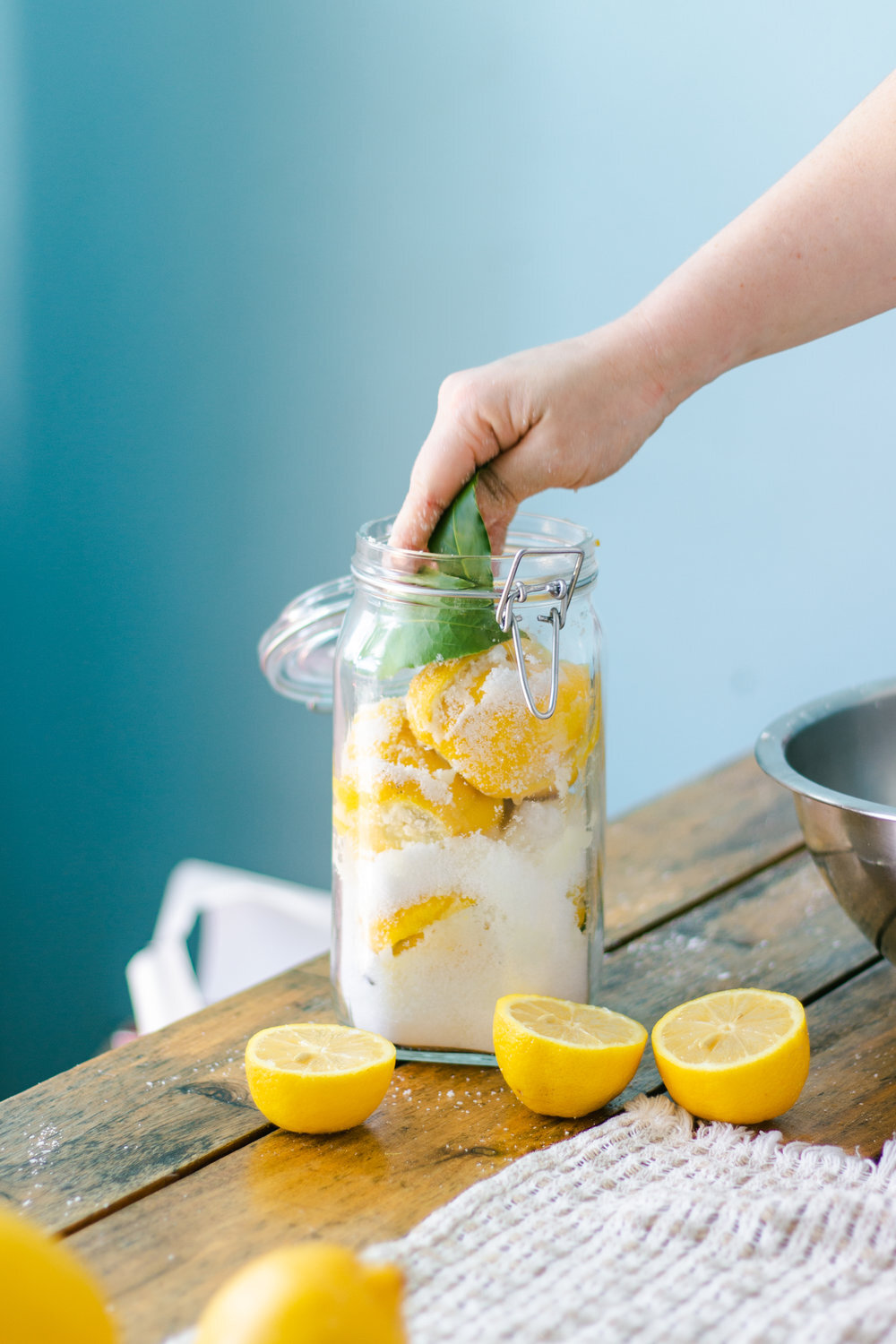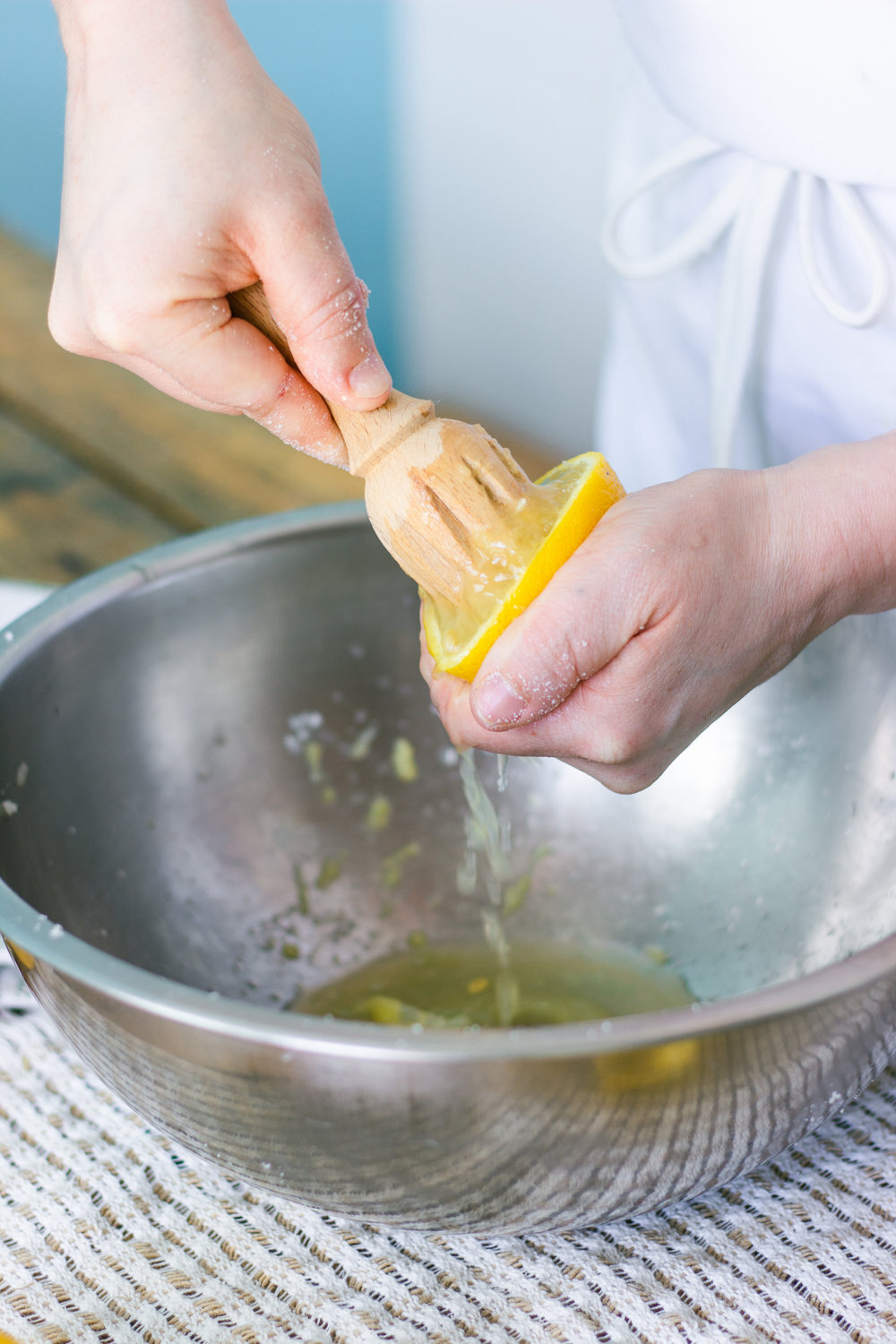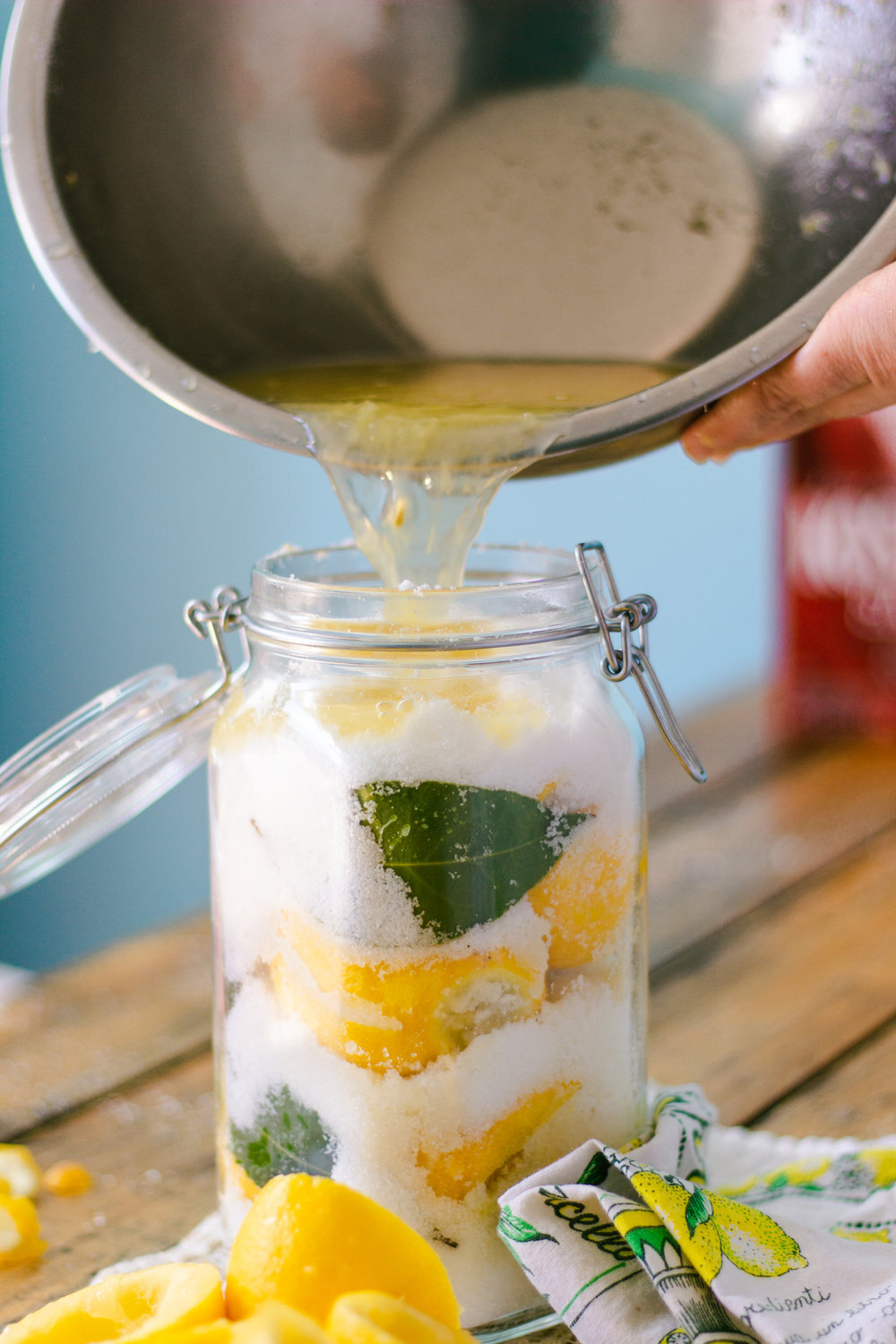Preserved Lemons
If you’ve read my post on our famous Cherbourg Double Lemon-Bar you might remember me calling Cherbourg Bakery the house that the lemon bar built. I really meant it. Despite our rotating selection of donuts (Coffee! Matcha! Strawberry Buttermilk!), stratas, quiches, and cookies, the lemon bar still reigns supreme. For this reason, I always stock a crate (or two) of lemons and have had to retire several pans and Microplanes fallen in service to the lemon bar. It seemed for so long that the combination of lemon and sugar just couldn’t be beat UNTIL I was re-introduced to the winning duo of lemon and salt in the form of preserved lemons.
Preserved lemons, if you haven’t been acquainted, are fresh lemons cured in salt (perhaps with the addition of herbs or spices - I use fresh bay leaves). They are a staple in North African and Middle-Eastern cooking, often served in a tagine, curry, or stew, but they need not be fenced in. My favorite recipe for preserved lemons comes from A Boat, A Whale, and a Walrus: Menus and Stories by Renee Erickson, a James Beard Award-winning chef and owner or four Seattle restaurants. For fans of the Pacific Northwest (me!), French cuisine (me!), and fresh seasonal food (me!), this book is a must-read. Preserved lemons are a fantastic accompaniment to seafood of all kinds, but would be equally at home in a salad, pasta, chicken dish - you name it. I plan to stir some in to my favorite whipped yogurt (recipe to come). Your preserved lemons won’t be ready to use until a month after you make them, so make them soon so they’re ready to add to all of your summer favorites (I think they’d be an amazing addition to anything grilled).
Check back and let me know how it goes!
Be Sweet &
See you soon,
Geri
Preserved Lemons
Prep Time: 15 minutes // Total Time: 1 month // Makes 6
Special Equipment: One 1 1/2-Quart-size jar with a lid
Ingredients
12 medium organic lemons
1 (3-pound) box coarse kosher salt
4 fresh bay leaves
Directions
Wash the lemons well and set 6 of them aside for juicing. Using a small, sharp knife, cut the dry stems (tips) off the remaining 6 lemons - just enough so you see their flesh poking through. Starting with the cut side, quarter the lemons the long way, slicing only about 7/8 of the way through, so each lemon is held intact by its blossom (pointy) end.
Next, pour a roughly 1/2-inch layer of salt into the bottom of a 1 1/2-quart jar. Fill a medium bowl with about 2 cups of the salt. Using your hands, roll the lemons in the salt one at a time, using your fingers to pack it onto the cut sides of each lemon. Add 3 lemons to the jar, add salt to cover, and stuff two bay leaves down into the jar. Add the remaining lemons, salt, and bay leaves then juice the remaining 6 lemons into the jar, seeds and all. Twist and turn and shake the jar to encourage the salt to settle, add salt to cover the lemons, and close the jar.
Let the lemons sit on the counter at room temperature for about 4 hours. As the lemons begin to lose their juices, the salt will dissolve and settle. Top the lemons off with more salt, then repeat again in the morning. (Note that you must keep lemons covered with about 1/2-inch of salt or salty liquid, or the air will reach the lemons and they will rot.) Store the lemons at room temperature in sight for a week or so, gently shaking and turning the jar and adding salt every day or two as needed, until the salt has all dissolved and the lemons are stored in a milky liquid. Transfer the jar to a cold, dark room and store for at least 1 month (or up to 4 months) before using, or transfer to the refrigerator and store for up to 1 year.



